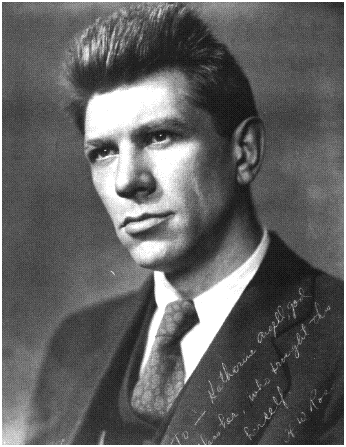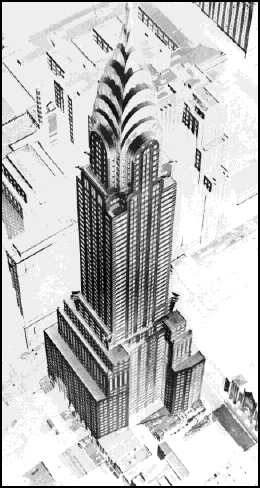The World
A Portrait of New York City
In the Roaring Twenties
David Wallace
(Lyons Press)

The chapter on Toscanini starts out "When you mention grand opera's golden-age soprano Geraldine Farrar to most people today ... they think you are talking about Geraldine Ferraro, the woman who ran for Vice President with Walter Mondale in his ill-fated 1984 presidential bid." Showing how square I am, I have to tell you that I wasn't thinking politics at all. I figured Wallace was referring to the English contralto Kathleen Ferrier, one of the greatest singers of that era, a fine interpreter of Mahler, Handel, and Schubert: a lady who died tragically young in 1953. That's how out-of-it I am.
Capital of the World tells of people who are definitely not out-of-it. Take David Sarnoff, a man who stepped over (and on) a mountain of warm bodies to make his way to the top of RCA and NBC. Then there is the notorious madam, Polly Adler, featured in chapter five, who lectured us all about her trade, telling us that what we call a house "is not a home." She also said,
- I am one of those people who just can't help getting a kick out of life, even when it's a kick in the teeth.

One of the themes here is that before Hollywood, New York was the gossip capital of the country. For thirty years, with his Sunday evening broadcast over ABC radio, Walter Winchell made and broke stars, politicians, social climbers, celebrities. We all listened to him and I'll never forget the arrogant opening lines growled at us over the tapping of a fake Morse Code key: "Good evening Mr. and Mrs. North and South America and all the ships at sea ... let's go to press!" What a wonderful piece of hokum that was, as if all of both North and South America were listening to him (with "all the ships at sea" thrown in for good.)
If this scattered book has a theme, it seems to be that gossip ran the world; that everybody from back then was faking it; and, underneath everything else, the movers and shakers all had lives that were a mess. Drunkenness, madness, cheating on your spouse, gangsterism, thievery, speakeasies and suicide are well represented here. Walter Winchell's son killed himself. Scott Fitzgerald and Robert Benchley drank themselves to death, Eugene O'Neill's wife Monterey became a drug-addict, and his son Eugene Jr. also killed himself.
Fanny Brice had rhinoplasty on her nose which shot down her career until she was resurrected as Baby Snooks. Dorothy Parker said that Brice --- who was Jewish --- "had cut off her nose to spite her race." (Parker was also the one who, when they announced that President Calvin Coolidge had died, asked, "How did they know?") Fitzgerald's wife Zelda was snappish too: she said that Scott's friend Ernest Hemingway was a "professional he-man ... a pansy with hair on his chest."

Or take this dangler:
- Hemingway, who had been seriously wounded while serving in Italy, seemed to take pleasure in writing about grisly wounds (in 1932's short story, "The Natural History of the Dead," for example) and collected pictures of corpses left in the wake of a Florida hurricane, and Fitzgerald, who never left America during his army service, had a huge collection of photographs of horribly mutilated soldiers, burned flyers, and executions.
Resembling Pope's famous Alexandrine, Wallace's typical sentence "drags its slow length along." Perhaps it is more a flatworm than a snake: in its passage it takes along shrubs, bushes, weeds, moss, ticks, bottle-flies and burned-out lovers and liners. Like,
- Eventually, due as much to the distance separating them when she returned to New York as anything else, the romance cooled, and Wilhelm married Cecilie of Mecklenburg-Schwerin after whom the famous German liner of the era, the SS Kronprinzessin Cecilie, was named; during World War I the liner was seized and quarantined in Bar Harbor, Maine, and later rechristened the Mount Vernon.
'Tis hard to say, Pope concludes, presciently,
Appear in Writing or in Judging ill.